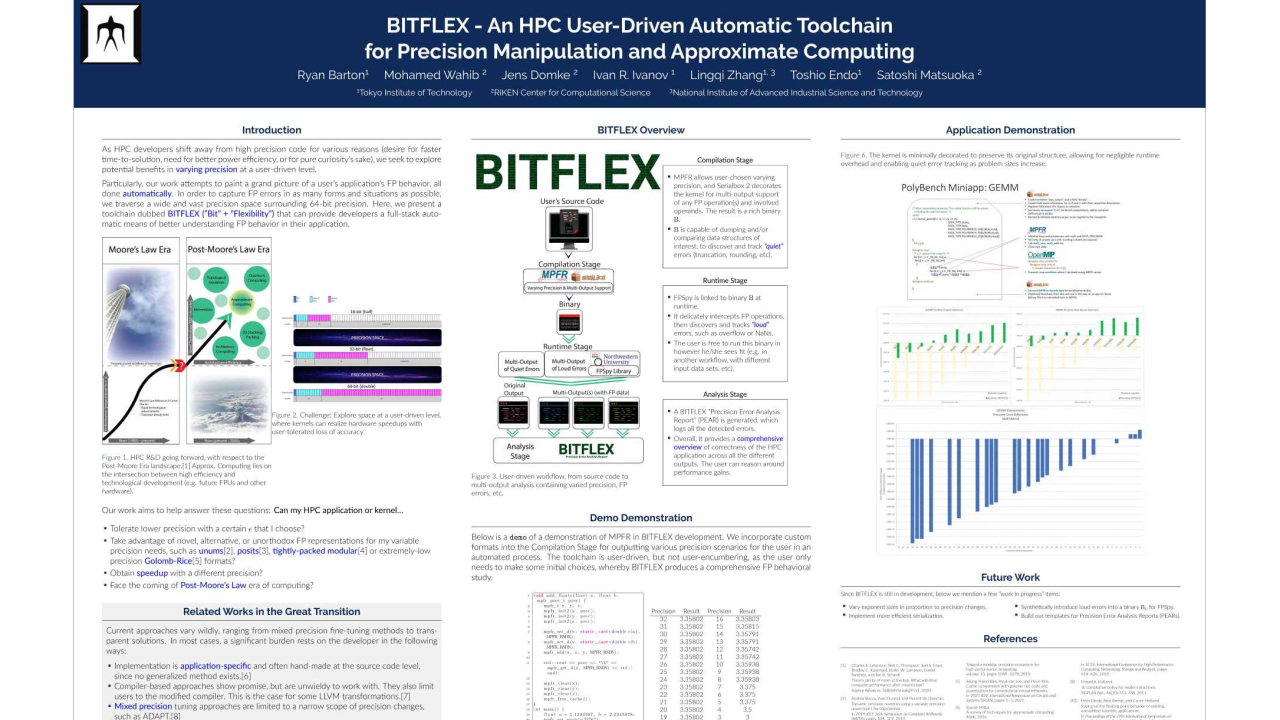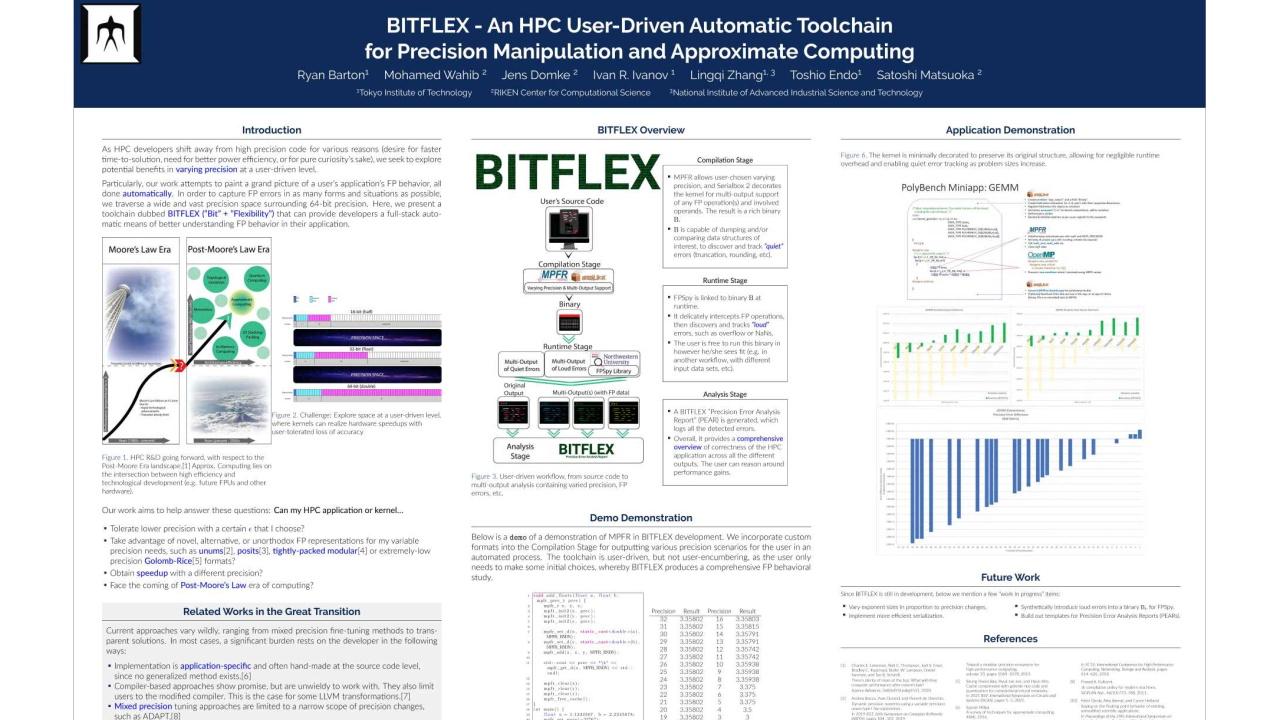

BITFLEX - An HPC User-Driven Automatic Toolchain for Precision Manipulation and Approximate Computing
Monday, May 22, 2023 3:00 PM to Wednesday, May 24, 2023 5:00 PM · 2 days 2 hr. (Europe/Berlin)
Foyer D-G - 2nd Floor
Research Poster
Computing Beyond Moore's LawMixed Precision AlgorithmsPerformance Modeling and Tuning
Information
There has been a growing interest in using varying precision code to achieve faster solutions, improved power efficiency, and preparing for future hardware in the HPC domain. However, existing approaches to implementing varying precision have been limited to certain approaches that pose challenges for HPC developers. Here, we present a user-driven automatic toolchain called BITFLEX (for “bit” “flexibility”). BITFLEX aims to alleviate hands-on effort on the developer’s part, as it provides a full front-to-back insight into the floating-point (FP) behavior in HPC applications.
At compilation, we employ MPFR to allow user-chosen varying precision, and Serialbox 2 to decorate the kernel for multi-output support of any FP operation and operand values. The result is a binary capable of dumping and comparing data structures of interest, for discovering and tracking "quiet" errors such as truncation or rounding. During runtime, FPSpy, a lightweight FP intercept tool, is linked to the binary and works underneath the hood. At this stage, we seek out and track any "loud" errors such as overflow or NaNs. Lastly, in the Analysis Stage, BITFLEX generates a "Precision Error Analysis Report" (PEAR), which logs all the detected errors. The PEAR organizes this data in an understandable format for the developer. Its helpful overview sheds light on the correctness of the developer’s HPC application, across all the different outputs.
The toolchain is still in development, but it aims to be an attractive means for HPC developers to reason around numerical accuracy, performance gains, and their projects in the Post-Moore Computing Era.
Contributors:
Contributors:
Format
On-site
Intermediate Level
33%
Advanced Level
67%
